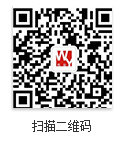
The textile industry is both a traditional industry and a dominant industry in China, making a huge contribution to the national economy. With the development of high-tech industries and the adjustment of the national economic structure, especially the reform of state-owned enterprises, the problems faced by the textile industry have been further highlighted, such as the reorganization of enterprises, the low labor productivity, the obsolescence of equipment and the backwardness of technology. However, the textile industry remains a large industry and plays an important role in the overall economic structure.
2018 green development to the end of the industry stable development
In 2018, the upstream raw materials rose sharply. From mid-May to early June, cotton rose. From the beginning of August to the end of September, chemical fiber products rose sharply. Both rises caused downstream manufacturers to complain, and finally wait until the peak season, raw material prices fell. However, the whole market is not good, orders are not much, September to October has become a low season, followed by a sharp drop in raw materials. In the ups and downs of the entire industry, large enterprises are somewhat profitable, and some small and medium-sized enterprises can be described as difficult, relying on past customers to place orders to maintain business development. Green production reform will go to the end. National policy and upstream enterprises require downstream products to be green and environmentally friendly, and they must be of high quality. This has to invest capital and technology to improve production, and SMEs face enormous challenges.
Since 2018, the world economy has maintained a recovery, the domestic economy has stabilized and the country's textile industry has achieved a smooth operation, and the trend of high-quality development has become more apparent. According to the National Bureau of Statistics, in the first ten months of this year, the growth rate of fixed assets investment in the textile industry was 6%, up 0.2 percentage points from the third quarter; China's textile and apparel domestic demand market showed a rapid growth trend, the national quota from January to October The retail sales of clothing, shoes, hats and needles and textiles increased by 8.4% year-on-year, and the growth rate increased by 1.1 percentage points compared with the same period of last year. Exports continued to pick up. From January to November, China's textile and apparel exports totaled US$253.96 billion, up 4.4% year-on-year. Under the support of the macroeconomic stability, the quality of the industry has continued to improve. From January to October, the textile industry achieved a main business income of 4,682.68 billion yuan, a year-on-year increase of 4.1%, and a total profit of 222.12 billion yuan, a year-on-year increase of 7.2%.
2017 China textile industry began to warm down
In 2017, China's textile industry began to warm up, and the growth rate of industrial added value of textile industry gradually increased month by month. The industrial added value of enterprises in the first six months increased by 5.3% year-on-year; the investment completion of investment projects of more than 5 million yuan in textile industry was 6030.14. 100 million yuan, an increase of 9.11%. From January to May, the main business income was 2,945.57 billion yuan, a year-on-year increase of 9.4%;
The total profit realized was 149.5 billion yuan, a year-on-year increase of 10.6%. The textile industry's exports showed a pick-up trend. From January to June 2017, China's total exports of textiles and clothing reached US$124.05 billion, a year-on-year increase of 2.1%. The growth rate of domestic sales has also accelerated. From January to June, the retail sales of clothing, shoes, hats and needles above the national quota increased by 7.3% year-on-year, 0.3% higher than the same period of the previous year.
2016 textile processing and exporting countries
In 2016, the national textile fiber processing volume reached 54.2 million tons, a year-on-year increase of 2.3%, accounting for more than 50% of the global fiber processing. According to the textile industry's “13th Five-Year” development plan, China's fiber processing capacity will be in the next four years. The annual growth rate of 1 million to 2 million tons continues to reach 60 million tons in 2020, and the growth rate is stable at 3.5%.
China is already the world's largest textile processing country, and China is also the world's largest textile exporter. According to the China Textile Industry Association, since 2010, China's textile and apparel exports accounted for a steady increase in the proportion of global textile and apparel exports, but the growth rate has gradually slowed down. In 2016, the global textile and apparel exports accounted for 38%.
2015 small business departure large enterprise upgrade
In 2015, there were 230,000 small and medium-sized enterprises in the textile industry and 38,000 enterprises above designated size. The update speed of textile companies has appeared more since 2008. In the whole year of 2015, China exported 291.1 billion US dollars of textiles and clothing, down 4.8% year-on-year. Among them, China's textile exports amounted to 115.26 billion US dollars, down 2.3% year-on-year, and clothing exports were 175.89 billion US dollars, down 6.4% year-on-year. This is also the first year of negative export growth in China's textile and apparel exports since the financial crisis.
"Now the collapse of SMEs is a lot of pressure to withstand the funds, and there are pressures from environmental protection." Zhang Jianxiang, deputy general manager of Lutai Textile, told the "China Times" reporter that "Atmosphere Ten" and "Water Ten" have been introduced one after another. The 'Ten Shi Articles' will soon be introduced, and the investigation and punishment of the environmental protection departments will also begin to increase. Textile enterprises are under great pressure on environmental protection. ”
The textile industry is a labor-intensive industry, 70% of the processes need to be done manually, but they hope that through the future transformation and upgrading, the proportion of technical and management positions can be increased, and the increase in employee income can be achieved in this way. . In 2015, companies also reduced costs and eased the operation of corporate funds through various means.
2008-2015 RMB appreciation, wage increase, raw materials rose
Since 2008, Hualian Sanxin, the largest PTA producer in Asia, has been in bankruptcy. Then, Jianglong Holding Group, China's largest printing and dyeing company, is facing a bankruptcy crisis. As the largest number of employed people, the textile and garment industry that has contributed the most to China's reform and opening up to achieve capital accumulation has actually fallen into this field. This is indeed not very embarrassing. However, "three feet of freezing, not a cold day", the fall of China's textile and garment industry is the result of the accumulation of various unfavorable factors.
It should be said that this wave of crisis began in 2008 with 4 trillion. According to some textile business owners, the textile and apparel industry had already had an economic crisis in 2008, and most companies are preparing to shrink capacity and lay off employees. However, due to the introduction of the “4 trillion” economic stimulus plan, since the second half of 2009, the business of the textile and garment industry has been extremely hot. In 2010, the price of cotton rose from 10,000/ton to 30,000/ton, and numerous industrial enterprises became rich overnight. . Under the short-term prosperity of the market and the promotion of the bank, the industry has set off a wave of crazy capacity expansion.
By 2012, the “4 trillion” economic stimulus has subsided, and many companies’ orders have fallen sharply. It costs tens of millions of imported high-priced imported equipment to be idle. Coupled with the sharp drop in the price of stock cotton, many textile companies earned zero money in the first two years.
In particular, in 2013-2015, many foreign-funded enterprises have been transferred to South Asia and Southeast Asia on a large scale due to the surge in domestic costs. The most famous ones include Adidas, Nike, Uniqlo, MUJI, Aoyama Business, Li & Fung, Tokyo STYLE, Honeys, etc. These companies are accelerating the transfer of orders to Southeast Asia.
In addition, due to the backward equipment in China's spinning industry and high operating costs, the current low-end market share of less than 50 has been eroded by countries such as Southeast Asia, India and Bangladesh. More than 100 high-end products are dominated by Japan, Germany and Italy.
From the perspective of the domestic economic environment, domestic demand will become an important driving force for industry growth. About 80% of Chinese textiles are consumed domestically. With the sustained and rapid growth of the domestic economy, the steady increase in household income will drive the further development of the domestic demand market.
Chinese textile enterprises should overcome the difficulties of rising raw materials, appreciation of the renminbi and adjustment of export tax rebates, seize the opportunities of the development of the textile industry, increase the concentration of industries, curb the blind expansion of inefficient production capacity, increase the construction of characteristic industrial parks, and strengthen independent innovation. The pace of upgrading the brand building of China's textile industry, industrial adjustment and upgrading. Make China move from a textile power to a textile power.







